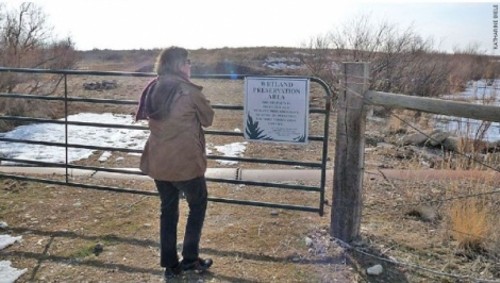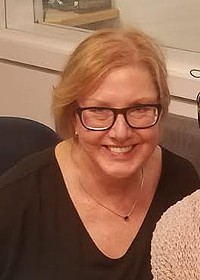Northwest Quadrant: nonsensical, inevitable or both?
Salt Lake City planners imagine a green utopia on empty wetlands.
By Katharine Biele @kathybieleWilf Sommerkorn isn’t exactly Brigham Young, but he knows a catchy phrase when he hears one.
“This might be the place,” Sommerkorn says, trying to sway a small group of sustainability advocates who’ve come to hear about this cool new village plan. Right here in Salt Lake City—well, sort of right here.
Plans are progressing to develop almost 19,000 acres of land west of the Salt Lake City Airport [see “This Is the Place,” March 11, City Weekly]. This is not land that you’d normally see developers rushing to snatch. Winding around and through mosquito-infested wetlands of Great Salt Lake, the low-lying, saline parcels are populated by migrating fowl, cattle and sheep farmers, a duck club and a couple of leaking landfills—not to mention insects.
But as Sommerkorn, Salt Lake City’s planning director, sees it, the land is an opportunity to showcase the city’s first “sustainable, walkable, low-carbon community.” Salt Lake City could make it a “template” for other communities, he says, just slightly ignoring the fact that Kennecott’s Daybreak has touted a similar “richer, more balanced life” in its village since 2004.
Daybreak is still a bit far from its goal. “The first and only sign of a downtown was when they offloaded rails to put at the end of the light-rail line,” says Roger Borgenicht, director of ASSIST, an independent, nonprofit, community-design center. The stations are up, but with nothing around them, it leaves the village center as skeletal as the housing stock—partially a victim of the recession. Still, it’s chugging along, having sold some 2,100 of its 20,000 projected homes, according to news reports.
“On the west side, smart developers want to have transit connections to their communities,” says Arthur C. Nelson, director of the Metropolitan Research Center at the University of Utah. “Most people in Daybreak will never use it, but knowing they have the option to use it makes a big difference in attractiveness.”
Transit, in fact, was one of the first pitches in favor of the proposed Northwest Quadrant. Despite stalled light raillines throughout the county, the Utah Transit Authority’s little train that could has been drawn right into the plans for the airport TRAX line, snaking from the airport and around the future town square.
Sommerkorn and the Quad’s primary pitchman, Carl Duke, took their vision to the Salt Lake Sustainable Building Conference in April in an attempt to pump up interest in the increasingly controversial plan. Duke is a vice president at Suburban Land Reserve, a property arm of the LDS Church, and together with Sommerkorn, painted a must-build scenario based on the premise that it’s going to happen anyway.
“A substantial amount of time, money and effort has been spent on this plan,” Sommerkorn says. In 1979 and ’80, the city annexed a couple of chunks of land there because of landowner interest in the development potential. Soon after, the International Center by the airport was developed. But it wasn’t until 2005 that the Salt Lake City Council actually appropriated funds and contracted with a consultant for an area master plan.
The story that Sommerkorn and Duke tell is one of clouded vision, as study after study pointed to this “burban” Quad as Salt Lake City’s Oz at the end of the yellow brick road. In their hour-long sustainability presentation, they pointed to studies that seemingly validated the plan five times.
“It’s like Cinderella’s stepsisters trying to force their big foot in this shoe,” says Lynn de Freitas of Friends of Great Salt Lake. “Anyone can be taken by the right pitch if they don’t look behind the curtain.”
While the 1998 Salt Lake Futures Vision sought to protect Great Salt Lake from “inappropriate development and overuse,” other reports dubbed the Quad as a “gateway,” the next prime sector to accommodate Salt Lake City growth with a kind of manifest destiny approach to keeping people “in” the city.
Sommerkorn pointed to a study by Robert Charles Lesser & Co., identifying the “huge deficit” of households in the “key core area” of the Quad (pdf). It wasn’t mentioned that RCLCO calls itself the “leading knowledge-solutions provider to the real-estate industry.”
Next, he sought to link to the U’s Nelson’s study, Wasatch New Urbanity Demand, which shows a 25 percent demand for transit-connected, suburban planned communities by 2040. This is what sparked Sommerkorn’s Youngian comment that the Quad might be the place to accommodate this growth.
Nelson, however, says his study doesn’t address the Quad specifically. “I don’t know if it’s right or not. Are there better alternatives than this? I couldn’t tell you,” he says.
But, Sommerkorn insists, “Growth will occur, and growth can be beneficial.”
Duke emphasizes the point. “The premise is that growth is coming,” he says. Population projections are as high as 5 million by 2050, according to the Utah Population and Environment Coalition. “That’s staggering,” he says. “How are we going to accommodate them?” Duke answers his own question by citing another study, this time from Envision Utah. In fact, it was the same RCLCO study referenced earlier. RCLCO’s Melina Duggal said the company performed the study in 2007 for Envision Utah, with the objective to understand growth and development trends from a market perspective. Not surprisingly, the study suggests “pentup demand for housing.” Duke suggests that the two defunct landfills were actually good for the area because they kept people from building in this otherwise pristine area. And, he says, concern for the long-term effects of global warming should be another reason to develop the Quad. Residents will walk and bike around the village and presumably take light rail to and from the heart of Salt Lake City. There is no mention of increased automobile miles.
Solar panels will help provide electricity to the homes, although the U of U architectural dean, Brenda Scheer, notes that the airport probably won’t be thrilled by the prospect of reflective panels nearby.
But it’s all good, according to Duke and Sommerkorn. “Why?” Duke asks rhetorically. “It’s the right place in the region, with housing, the westerly gateway and transit opportunities like nowhere else in the region.”
Never mind, says Salt Lake City Councilman Soren Simonsen, that the justification is based on dubious precepts from the ’70s and ’80s. The city council will be asked to vote on the plan soon.
“It’s a struggle for me to understand how we develop in a location that makes absolutely no sense,” he says.
Unless you’re a developer. In that case, this will be the place.
Speaking of Articles, City Weekl,
-
Playing Hooky
A day on the greens is a treat even for an unskilled golfer
- Jun 11, 2014
-
The Game of UDOT
Retire from state. Get job with private firm. Land state contract. Collect taxpayer millions. You win!
- Feb 26, 2014
-
Knowledge Is Power
I agree with Scott Renshaw that there are plenty of things many of us don’t know about Utah...
- Dec 24, 2013
- More »
More by Katharine Biele
-
Deseret News poll shows Donald Trump skating to another victory in Utah.
Hits & Misses
- Apr 17, 2024
-
LDS General Conference dominates local news while stories on diversity and discrimination take a back seat
Hits & Misses
- Apr 10, 2024
-
Utah's GOP Senate candidates try to out-MAGA each other in a race to the bottom.
Hits & Misses
- Apr 3, 2024
- More »
Latest in News
Readers also liked…
-
Raise a glass for E.L.T Harrison, architect of the Beerhive building on Main
Small Lake City
- Oct 11, 2023





